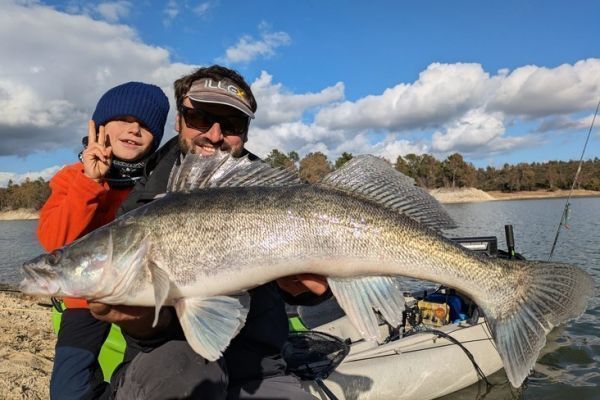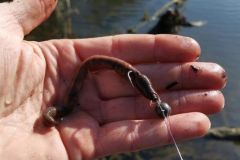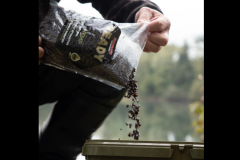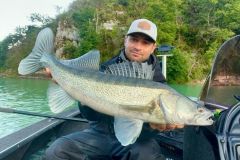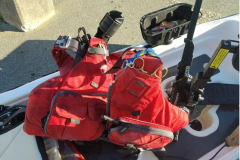It's vertical fishing from a kayak that we're going to develop today.
Pike-perch fishing from a kayak is formidable in many ways. This light, manoeuvrable craft allows you to fish precisely where you see it on the depth sounder. Its slow drift is one of the keys to successful vertical fishing.
The kayak's suitability for vertical climbing
In fact, to fish well vertically, you need to present the lure as vertically as possible under the rod tip. When the angle is too steep, the lure is less effective at perceiving the bottom, moving and reacting to the strike.
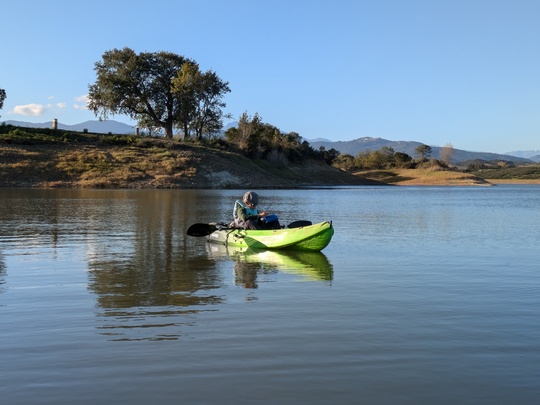
If you can't, you'll have to slow down the drift or fish heavier. The idea is to fish heavy enough to be plumb while being as light as possible...
The kayak is very effective for long drifts and finding good spots, as you can move quickly and for a long time. The float tube is more effective for keeping the lure plumb, but less effective for beating ground.
For the vertical to be effective, you need to find out how deep the pike-perch are holding and attacking! It's not uncommon for the fish to be stuck to the bottom and not visible to the depth sounder. And this is where the kayak offers a real advantage, as it can quickly determine the optimum depth, thanks to its ability to beat the ground.
I highly recommend the use of a pedal kayak. The Hobies, and particularly the Outback, are exceptional, but it's the hands-free aspect that really comes into its own. One hand on the rudder to steer the kayak, the other holding the rod and fishing!
A casting rod is also a plus, as you can easily adjust the depth of the lure with one hand and maintain regular contact with the bottom.
Adapting your equipment
Another aspect often overlooked is the tendency to believe that you need a short rod to fish well vertically. This is actually quite true, as rod length is rarely needed in a boat or float tube. In a kayak, on the other hand, you need to keep moving the line and lure from one side of the boat's nose to the other. I recommend a rod length of between 2m10 and 2m20. That's pretty restrictive, but fortunately it's a rod length that's widespread and easy to obtain.
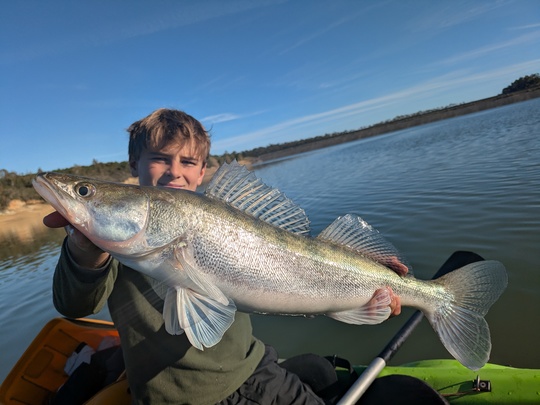
Vertical fishing requires very little equipment. This is more suited to kayak fishing, where you want to limit the amount of tackle you need to take on board. A lead head box with several weights to adapt to conditions and keep the plumb. On lakes, weights of 15 to 40 grams are sufficient. Avoid fishing too deep, as pike-perch don't like to come up from the depths... No need for anything heavier. On rivers, on the other hand, lead heads of up to 70 grams are often required! Sometimes even more.
When it comes to choosing lures, there's no need to get too comfortable. A few shads and finesse from 4 to 7 inches (10 to 17.5 cm) will do the trick. The advantage of finesse lures is that they don't stick in the water, even in strong drifts or currents. Among other things, they allow you to reduce weight and get better-quality bites.

Finally, a depth sounder is a real plus. It gives you a good idea of the depth and nature of the seabed. Any relief is worth exploring.
